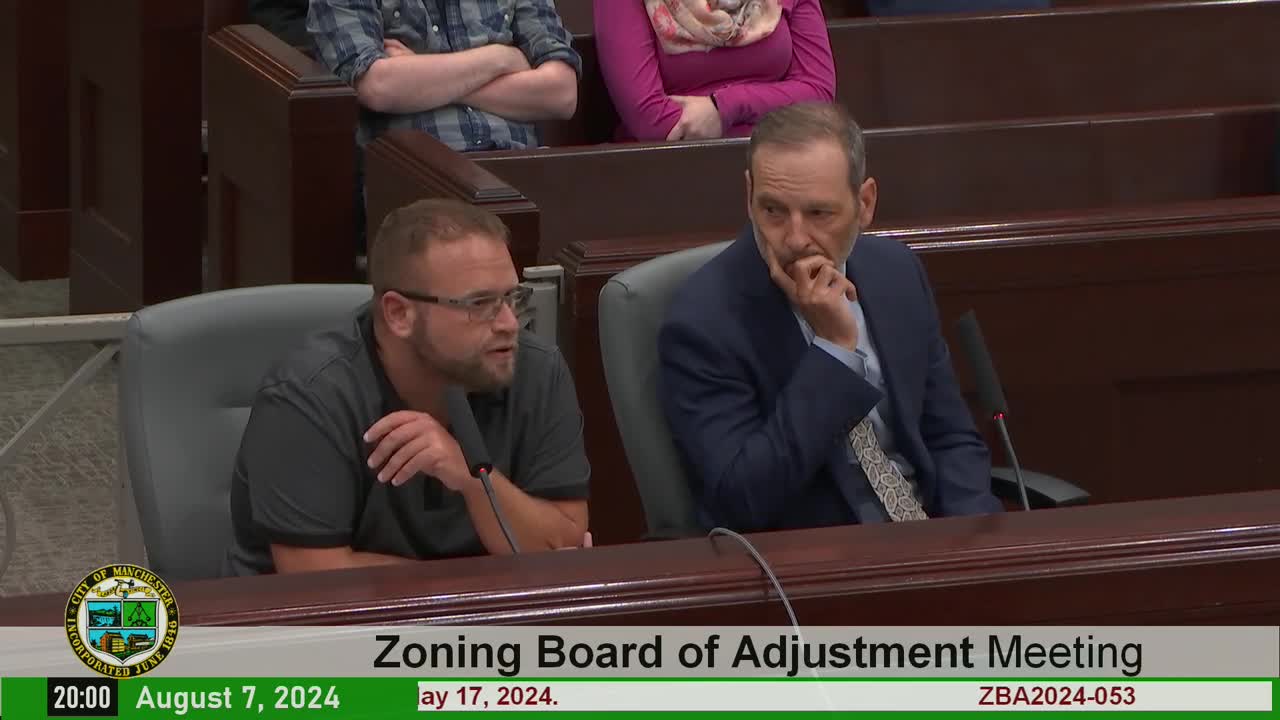Supporters rally for recovery housing amid community opposition
August 07, 2024 | Manchester Planning & Zoning Board, Manchester, Hillsborough County, New Hampshire
This article was created by AI summarizing key points discussed. AI makes mistakes, so for full details and context, please refer to the video of the full meeting. Please report any errors so we can fix them. Report an error »

In a recent government meeting, discussions centered around the importance of sober living facilities for individuals in recovery, highlighting their role in fostering community integration and reducing relapse rates. The meeting featured testimonies from both supporters and opponents of a proposed sober living house, emphasizing the need for such environments as a transitional space for those who have completed treatment programs.
Supporters, including residents and recovery advocates, underscored the positive impact of sober living homes on individuals' lives and the surrounding community. They cited statistics indicating that extended recovery housing significantly improves long-term remission rates, arguing that returning to unsafe or triggering environments after treatment often leads to relapse. One advocate noted that living in a supportive community allows individuals to seek employment, attend meetings, and engage in healthy activities, which are crucial for their recovery journey.
Several residents living near the proposed facility expressed their support, sharing personal experiences of feeling safer and more secure since the house has been occupied. They described the residents as responsible and respectful, contributing positively to the neighborhood. One local business owner highlighted the success stories of women in recovery, noting their achievements in securing jobs and rebuilding relationships with their families.
Conversely, some community members voiced concerns about the potential impact of the sober living house on neighborhood safety and property values. They raised questions about the management and supervision of residents, seeking clarity on how the facility would operate within the community.
The meeting concluded with a call for further public input, as the board seeks to balance the needs of individuals in recovery with the concerns of local residents. The ongoing dialogue reflects a broader societal challenge of integrating recovery support systems into communities while addressing apprehensions about safety and neighborhood dynamics.
Supporters, including residents and recovery advocates, underscored the positive impact of sober living homes on individuals' lives and the surrounding community. They cited statistics indicating that extended recovery housing significantly improves long-term remission rates, arguing that returning to unsafe or triggering environments after treatment often leads to relapse. One advocate noted that living in a supportive community allows individuals to seek employment, attend meetings, and engage in healthy activities, which are crucial for their recovery journey.
Several residents living near the proposed facility expressed their support, sharing personal experiences of feeling safer and more secure since the house has been occupied. They described the residents as responsible and respectful, contributing positively to the neighborhood. One local business owner highlighted the success stories of women in recovery, noting their achievements in securing jobs and rebuilding relationships with their families.
Conversely, some community members voiced concerns about the potential impact of the sober living house on neighborhood safety and property values. They raised questions about the management and supervision of residents, seeking clarity on how the facility would operate within the community.
The meeting concluded with a call for further public input, as the board seeks to balance the needs of individuals in recovery with the concerns of local residents. The ongoing dialogue reflects a broader societal challenge of integrating recovery support systems into communities while addressing apprehensions about safety and neighborhood dynamics.
View full meeting
This article is based on a recent meeting—watch the full video and explore the complete transcript for deeper insights into the discussion.
View full meeting
